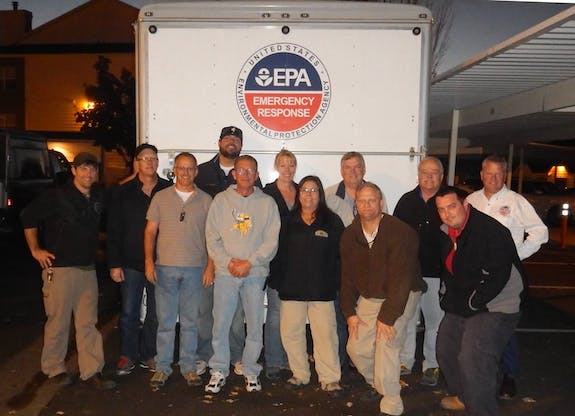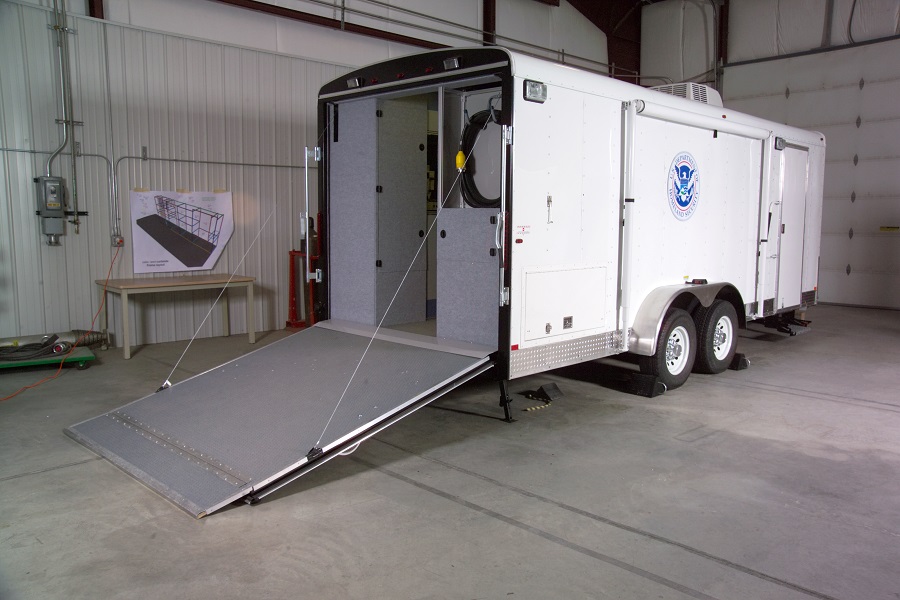The U.S. Department of Energy’s Radiological Assistance Program, or RAP, administered by the National Nuclear Security Administration, recently observed its 60th anniversary of providing capability to swiftly respond to potential radiological or nuclear emergencies.
RAP maintains eight regionally based coordinating offices managing teams of specialists who are ready to advise and assist local responders in evaluating and minimizing hazards from events including radiological or nuclear accidents, lost or stolen radioactive materials, nuclear weapons incidents, and acts of nuclear terrorism. Each region includes at least three teams of eight highly trained specialists in radiological control and health physics. Except for three full-time program staff, those specialists are volunteers who commit time to train for RAP deployments and responses in addition to their regular jobs.
Since the RAP program was first established, a five-state regional team based at Idaho National Laboratory has been an essential partner to local, regional, national and international emergency preparedness and response organizations. INL’s RAP teams have provided training for first responders, assisted in investigation and mitigation of suspect radiological contamination sites, and supported local and national security forces in monitoring and surveying venues hosting significant national special events.
INL-based RAP Region 6 is responsible for responding to radiological or nuclear incidents and events occurring in Idaho, Montana, Wyoming, Utah and Colorado. RAP Region 6 is managed by DOE Regional Program Manager Diane Clark from Region 8 headquartered in Richland, Washington.
INL RAP’s full-time staff includes David Everett, regional operations manager; Kevin Hungate, team equipment coordinator; and Doug Walker, training and outreach coordinator.
RAP members are prepared to respond at a moment’s notice. “For planned events, we get quite a bit of lead time,” said Mike Sandvig, INL’s operations lead for National and Homeland Security, and a RAP volunteer since the late 1980s. “But I’ve also been at home and have gotten a page or phone call from the Warning Communications Center. As a RAP captain, I call the team and two hours later, we’re on an airplane going somewhere.”
RAP teams mobilize in response to a variety of incidents, from relatively minor events such as leaking container spills, potential contamination cleanup, and accidents involving nuclear material transport, to those with far-reaching consequences such as the Three Mile Island reactor accident in 1979, the 9/11 terrorist attacks, and the Fukushima Daiichi reactor damage resulting from a major earthquake and subsequent tsunami in 2011.
RAP origins
RAP is NNSA’s first team of experts to respond to radiological or nuclear incidents. Depending on the extent of the incident, RAP teams may tap into other NNSA assets such as the Aerial Measuring System, the Atmospheric Release Advisory Capability, and the Radiation Emergency Assistance Center/Training Site to ensure decision-makers have the knowledge and know-how they need for determining next steps.
RAP was established by the Atomic Energy Commission on June 10, 1958, to provide on-call experts who are available to respond to, evaluate and minimize consequences of a radiological or nuclear incident by monitoring for radiation, assisting with decontamination efforts, and offering medical advice and analysis. That original mission remains the core of the RAP identity, carried out through three primary support missions: Consequence Management, Crisis Response and Regional Preparedness.

Consequence management
When a known or suspected release of radioactive materials occurs, understanding the extent and composition of released material is critical to determining the best way to deal with the hazard and minimize risks to people, property and the environment. Each RAP team is fully trained and equipped to carry out radiation surveys, measure contamination levels, and conduct air sampling, with access to the most advanced radiation detection and protection equipment available. Resources include portable field radiation monitoring instrumentation (hand-held and backpack-mounted); larger detectors that can be installed on a mobile platform such as a vehicle, boat or aircraft; generators, air sampling and decontamination equipment; as well as mobile laboratories and command posts, communications gear and personal protective equipment.
Over the years, INL’s RAP team has responded to real and potential radiological or nuclear events across the region, and offered expertise internationally in response to the Fukushima disaster and other incidents. Support can be as simple as providing advice during a telephone call, up to a full-scale response with team members arriving on scene with state-of-the-art equipment to help identify and characterize radiological releases and minimize hazards.
Crisis response
RAP teams are a key component of NNSA’s counterterrorism response mission. Detection of radiological or nuclear threats gained new urgency following the 9/11 terrorist attacks. RAP teams routinely conduct joint training and exercises with the Federal Bureau of Investigation, the Department of Homeland Security, the Department of Defense and other federal agencies.
Recognizing that significant national and public events present an attractive target to foreign and domestic terrorists, RAP teams are a key part of security for occasions such as presidential inaugurations, Republican and Democratic national conventions, international summit meetings, and major sports events.
Providing support for special occasions makes up the majority of INL’s RAP workload today. The team has geared up to work with security for the Air Force Academy’s graduation ceremonies in Colorado Springs, Colorado; sports events, including the Olympics in Salt Lake City, Utah; and other significant large national events.
In addition to surveying the venue prior to the event, RAP teams scan event attendees. “We are the folks on the outside standing with the security people, wearing backpacks and other kinds of detection systems, making sure people aren’t bringing in anything radiologically dangerous,” said Hungate.
Regional preparedness
Regional preparedness is vital to the RAP mission. INL’s RAP team regularly works with other federal, state, local and tribal authorities to conduct or participate in regional exercises, drills and training activities, teaching first responders about radiological or hazards and building relationships.
In 1999, for example, DOE opened the Waste Isolation Pilot Plant in New Mexico. Transuranic waste is transported from sites across the country in specially designed, accident-resistant containers, to be stored underground at WIPP. During the months leading up to the WIPP site opening, RAP teams trained first responders across the nation. “We held exercises with first responders up and down the WIPP transportation corridor to help them understand the hazards and emergency procedures to be taken in case of an incident,” Sandvig said. Today, first responders know they can rely on the RAP team for assistance, and trust team members they recognize from joint exercises.
Teamwork
From the beginning, RAP teams have been made up of expert radiological/nuclear scientists, technicians and engineers. “Generally speaking, we are looking for volunteers with an in-depth grasp of health physics and radiological control. Lots of folks on our team are former nuclear Navy,” said Hungate. “The Navy provides a wealth of radiological control and safety training that produces the kind of people RAP needs.”
During his 30-plus years as part of the Region 6 RAP, Sandvig has worked at Olympic events, Air Force Academy graduations, and served as RAP team captain at President Obama’s first inauguration. “One of the things that I, and a lot of others on the team have considered, is that we view volunteering for the RAP as public service,” Sandvig said. “There’s always the distinct possibility of walking into something that is a high-hazard kind of a situation. So we’re thinking, ‘Well, who else is going to do this?’ If there is some radiological element to it, local responders need all the help they can get.”
“Since its inception 60 years ago, RAP has been a unique national asset that provides experts in support of public health, safety, and national security to local, state and federal decision-makers,” said Jay Tilden, NNSA’s associate administrator and deputy undersecretary for counterterrorism and counterproliferation. “What makes DOE unique is not that we are first responders, but experts who respond. Most of our RAP team members have full-time positions within our laboratories, sites and plants, and yet are on call to respond at a moment’s notice. I, along with all of us in the department and the agency, owe thanks to the past and current members of RAP for their vital contributions to public safety.”





